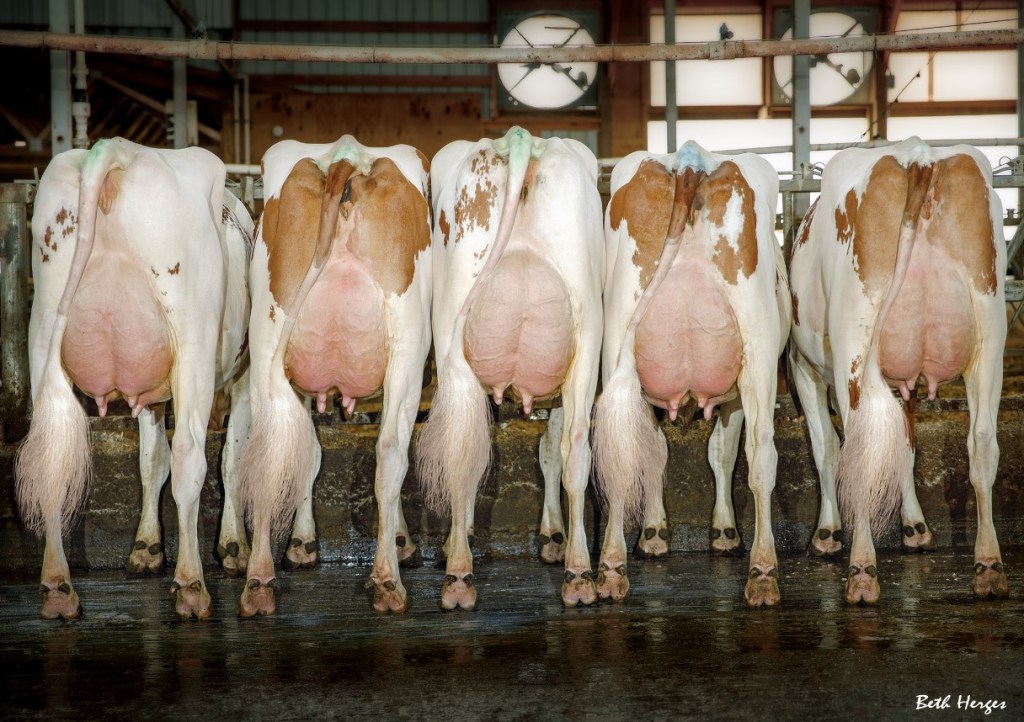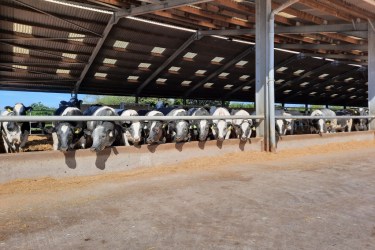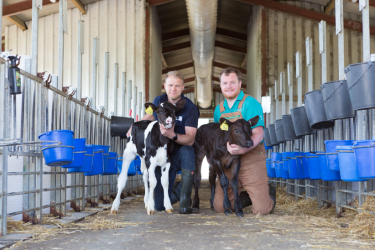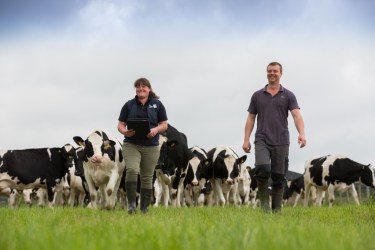Dairy producers have a constant challenge of improving herd performance to meet the changing challenges of today’s dairy industry. To be economically successful and get ahead, you need genetically superior cows that perform in your environment. To get there, you’ll need to set specific goals with defined objectives to improve your genetics from calf entry through breeding and beyond. Here are some of the ways we can take the unique factors and important pieces of your dairy operation to ensure we’re identifying the right genetics to improve your herd in your individual situation.
Profit from genetic progress
It’s critical that we provide the right genetics for each individual farm – because no dairy farm is going to have exactly the same goals and starting point as any other.
Second, it’s important to understand the goals and where the improvements to herd performance need to be made – this is the first step in identifying which traits should be prioritized in order to improve the herd, and decide where to focus selection on.
However, it’s not unusual to find that, even when producers have an idea of what traits they want to emphasize, the steps of utilizing that knowledge is misunderstood, and genetic selection is hindered by putting the information into practice incorrectly.
Genetic roadmap
Building a genetic plan for improvement is a lot like mapping out a road trip. It starts by understanding where you’re starting from, identifying where you want to get to, and then plotting the points in between.
So, the starting point of your journey is what your herd looks like today, its needs, the dominant traits and characteristics, and its profitability. What are the traits you’re really happy with, and which ones would you like to lose? And the endpoint is the levels of performance and profitability you’d like to gain five years from now. Plotting the points in between is identifying and selecting for the particular genetic traits that will get your herd to that endpoint. By understanding the current vs future herd’s needs, we can effectively build a genetic progress roadmap that is tailored to your farm and your goals.
First, this requires an understanding of your ideal cow. What type of cow fits the model you’ve built?
Layer in the economics, understanding milk production, feed costs, health costs etc. Combining these two pieces of information enables us to create a custom index for ranking sires and heifers for the next generation.
Your genetic framework
Creating this roadmap doesn’t have to be complicated. Answering these four key questions can give you all the information you need to create the right framework for your genetic plan.
How do you get paid for your milk?
Look at what your buyers prioritize. Do you need to concentrate on increasing fat kilos or pounds of milk? Looking at the profit centers for your specific buyers is an important place to start in deciding which traits to focus on.
Why do cows leave your dairy?
Looking back over your inventory records, find out the reasons why cows are culled. Where has longevity been limited within your herd? What are the main reasons cows don’t last longer? Knowing the answer to this question gives a focus on where we can create genetic progress and create a future generation that does better in those areas, giving you more productive months in the herd.
What are you happy with in your current herd?
Assess the characteristics within your herd today that you’re pleased with, that you’d like to keep as they are or build out further. Are the udders good for efficient milking? Are your cows big enough? Is your herd’s fertility and reproductive rate where you want it to be? Identifying what you’re happy with helps to decide which traits you’re taking forward with you into future generations.
What needs to be different in 5 years?
What kind of increase in milk production are you looking for? What are the areas of your herd performance that aren’t as good as they could be? Understanding the ways in which your herd needs to evolve and improve to maximize profitability will help to build a picture of the traits that need to be prioritized in the next generation.
The answers to these four questions will become the underlying information we use to create a tailored genetic plan for your dairy. When we’re ready to start the work, we’ll begin by assessing your herd. This is a process that will involve you and your farm manager and will include recording data about production and reproduction performance as well as taking a sample of blood from each animal to perform DNA analysis. This information will help us identify which traits have been passed down from parents to offspring, how strongly they are expressed in each individual cow on your farm, and whether there are any gaps in their genetic makeup that need addressing. We can then layer in the answers to your questions to create a genetic roadmap for the next 5 years.
Genetic progress is not just about higher milk yields or higher birthweight calves – it’s also about healthier cattle and a sustainable future. This means keeping the right type of animals, in the right place and at the right time. At ABS, we’re here to support you with our genetic programs, breeding advice, performance testing services, and data management products that take account of your individual farm needs.
Longevity
Long-lived cows are good for your operation. They produce more milk and their replacement costs are lower. However, their weakest link is the most important part of the culling decision. A heifer may have great production yield, great conformation, great disease resistance, and never suffer reproductive issues. But if her fertility has dropped because she’s already been bred 5 times, that’s the sole factor that determines her longevity.
For that reason, we need to consider the genetic potential of a cow in order to determine her longevity. We can genetically test to measure conception rates and pre-breeding risk factors. These tests predict how many calves a heifer will have over her lifetime, which allows us to make more informed culling decisions.
Genetic indexes can have so many different factors that overall progress can be diluted. By just deciding on the three or four key traits that will have the biggest impact on your herd, you will gain quicker and more meaningful genetic improvement. Selecting for the right traits will reduce the time and cost of genetic improvement. If we can pinpoint the most important traits, then we can make better decisions about which animals to cull and which ones to keep. This will speed up progress towards your goals.
Bull selection
Selecting the right bulls for your genetic improvement plan isn’t always as straightforward as it might seem. Logically, a dairy farmer may decide that the best way is to sort for their most desired trait, and discount all bulls below a certain point, then move onto the next trait and repeat. However, this process can result in selecting bulls with overall lower genetics across their key traits.
Eliminating bulls below the criteria line based on one trait can be detrimental to overall genetic progress, for 3 reasons:
- Not understanding the bull trait ranges and setting unrealistic levels.
- Criteria doesn’t reward bulls that exceed criteria even when the added genetic gain has a significant impact on herd profitability.
- Removing great bulls that miss the criteria within a data collection margin of error (e.g. 1 tenth of a point.)
Industry indexes
Most countries have one or two main indexes to evaluate genetics and those indexes are great for benchmarking. However, they are typically based on national averages, so don’t account for regional milk markets or individual management styles.
Some of the trait index scores will be based on needs that are different from yours, and points weightings won’t actually reflect the importance of the particular traits you’re looking for.
A customer index will be tailored to your individual management style and herd goals. A genetic advisor can help to maximize profitability by weighting traits based on economic importance and taking into account trait correlation.
That’s how sometimes using generic indexes can create new problems in barns. For example, if selecting for udder score, you may end up breeding for closer teat placement than your needs require, leading to milking inefficiencies.
Working with ABS to create an index specific to your dairy is the fastest way to develop a herd that works for you. We can also customize our indexes to suit your management style, herd goals and the environment in which your farm operates. Our team will work with you to understand what traits are important on your farm and how they relate to each other. They’ll then use this knowledge to create an index that helps you maximize profitability within a particular market context.






